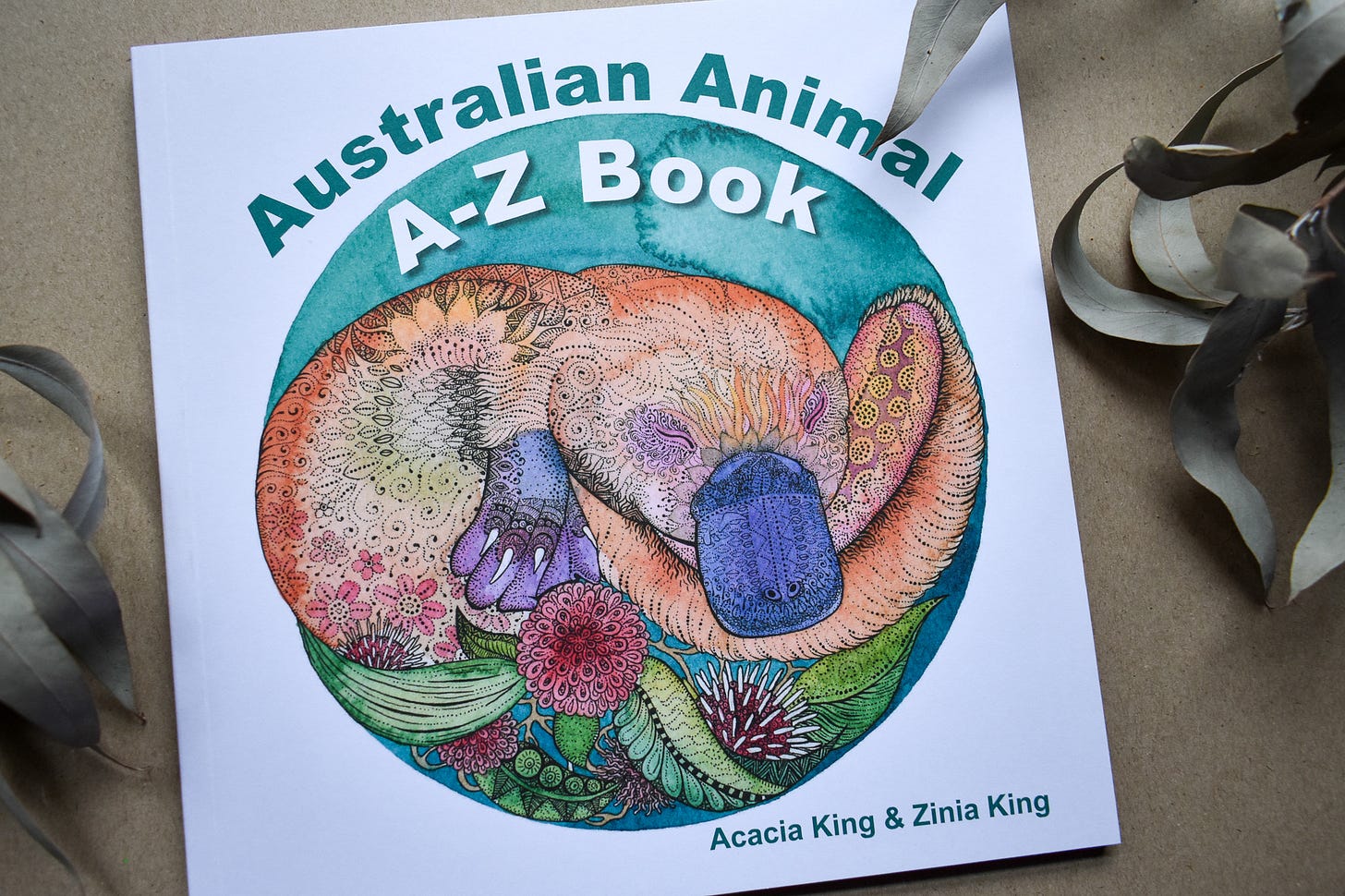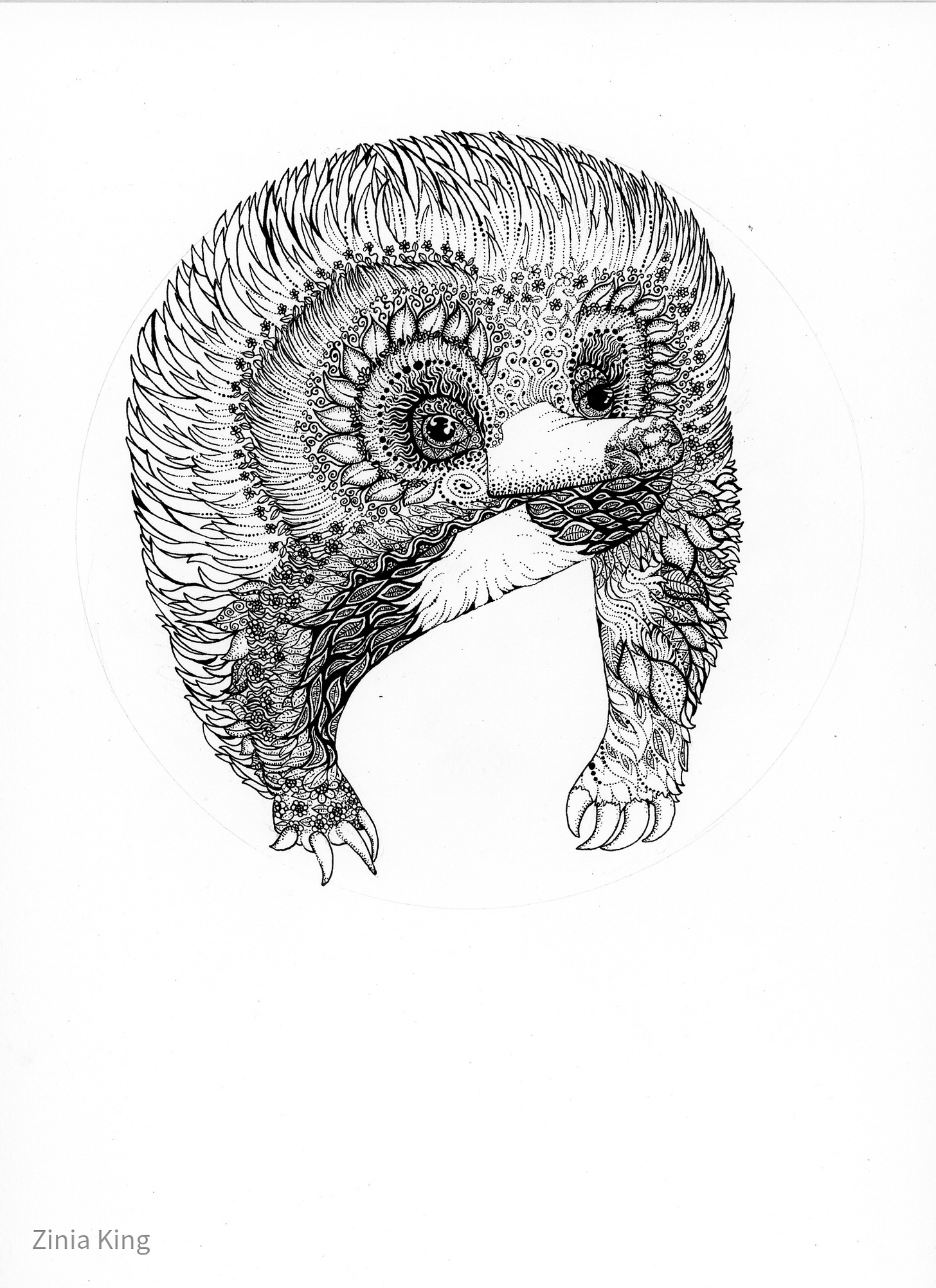Hello beautiful people and welcome to Lesson 5 of ‘Aussie Animals’ - Echidna! I’m often shocked by how little people know about Australia’s animals. Of course, everyone knows about Kangaroos and Koalas… but what about an Antechinus or Dunnart? See a video of me talking about the Echidna here.
Living in a country that’s caused the extinction of more animals than any other nation (see this ACF PDF), I feel a duty to spread awareness of these animals before they disappear forever (hopefully not).
In 2020, I illustrated an A-Z Book of Australian Animals packed with interesting facts and beautiful artwork to showcase the majesty of these creatures. My sister Acacia did lots of research (using her science background) and we both put together the writing. Check out the book here, they’re printed sustainably in Adelaide and I’m donating $5 from every book sold to the Bob Brown Foundation.
Today we’re looking at the Echinda, probably one of my favourite animals! I’ve often been completely entranced by their cute little waddle and way that they snuffle around to find food. Echindas are sometimes called ‘spiny anteaters’ and are unusual mammals called ‘monotremes’. Monotremes lay eggs, but also produce milk to feed their young. Echindas don’t have nipples, they secreat milk from two ‘milk patches’ on the mother’s body. The other monotreme that you might have heard of is the platypus.
Fun Facts
Look closely at the 5 cent coin, you’ll find an echidna there!
Male echidna’s have a 4-headed penis and females have a two-branched reproductive tract.
Baby echidnas are called ‘puggles’.
Echidnas will dig into the ground and curl themselves into a ball making it hard for predators to penetrate their spiky exterior.
Male echidnas have non-venomous spurs on their hind feet.
The oldest recorded echidna in captivity was 50 years old.
The short-beaked echidna’s favourite food is ants and termites.
The long-beaked echidna loves worms and insect larvae.
Echidna’s have no teeth, so they break down food by squashing it between their beaks and spiny tongues.
Echindas love a good swim! They use their snout as a snorkel.
Echidnas are Australia’s most widespread native mammal, meaning that you can find them almost anywhere - from snow to desert. Dangers for echidnas include feral dogs, cats, foxes and goannas. Consider walking with your dog on a leash in natural environments and keeping your cat inside. Also donating to conservation charities like Bush Heritage Australia or the Bob Brown Foundation will help to conserve their habitat. Don’t forget that I’m donating $5 from every one of my Australian Animal A-Z Books to the Bob Brown Foundation, so you could consider doing that too?! 😊
There is so much more to know about the Echidna, why not learn more about them and other awesome animals in my Australian Animal A-Z Book? You can also buy a giclee print of the Echidna artwork here.
Well, that it for now - my take on the Echidna. If you have had an experience with a Echidna, I’d love to hear about it in the comments. Also, if you liked this blog post and want more interesting arty Australian flora/fauna content like this why not subscribe?
Maybe you’d like to draw your own Echidna or enjoy this colouring page (paid subscribers only) so you can colour and consider this cute little marsupial.
With love and a dose of whimsy,
Zinia King
Download your exclusive colouring page here, don’t forget to send me your creations.






